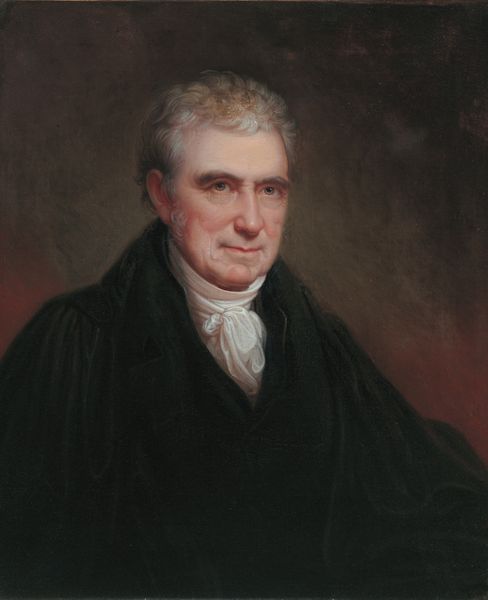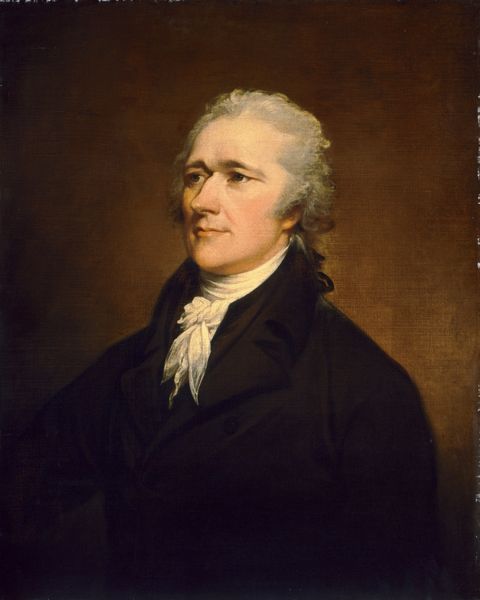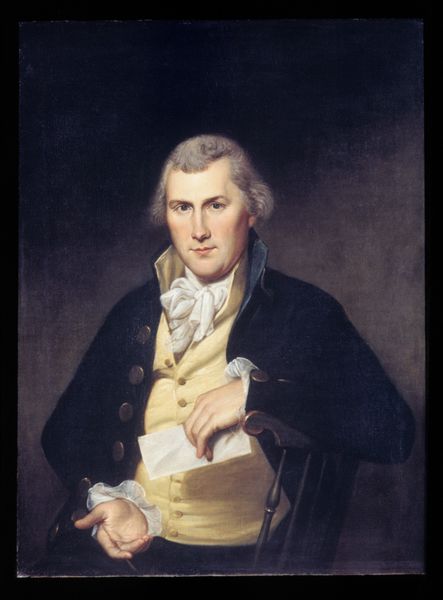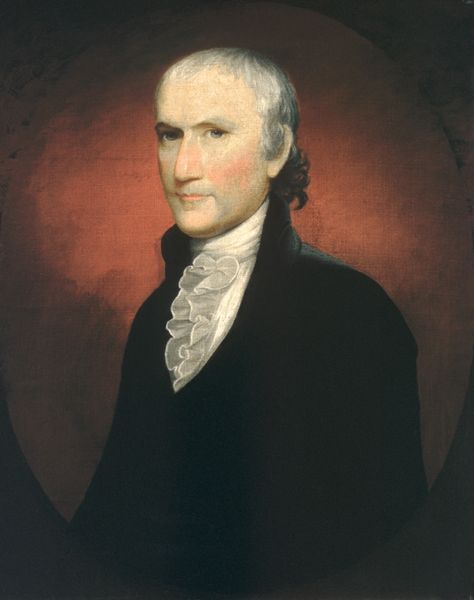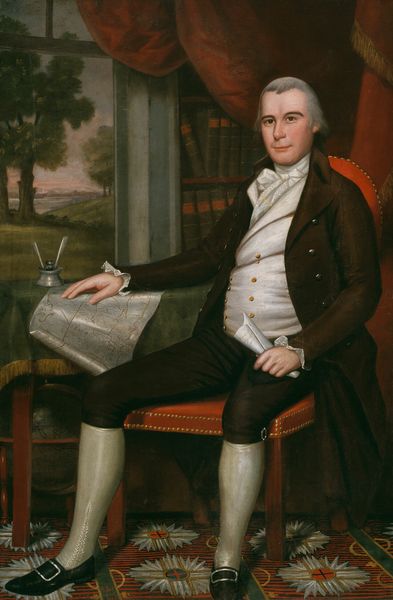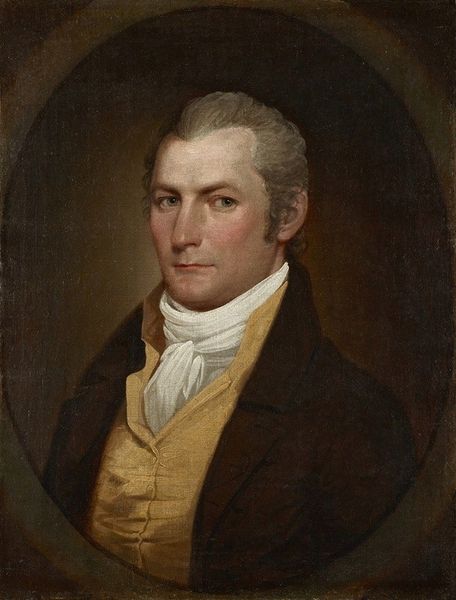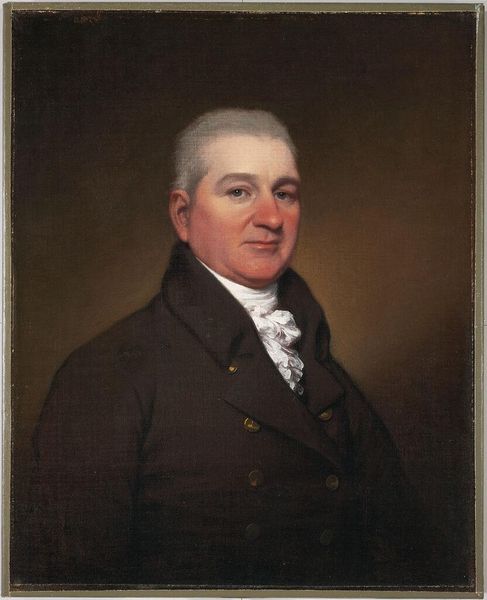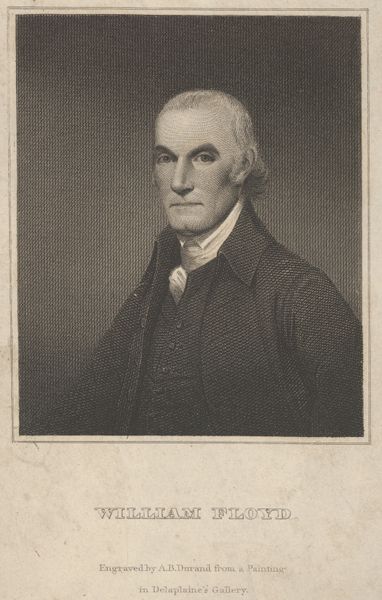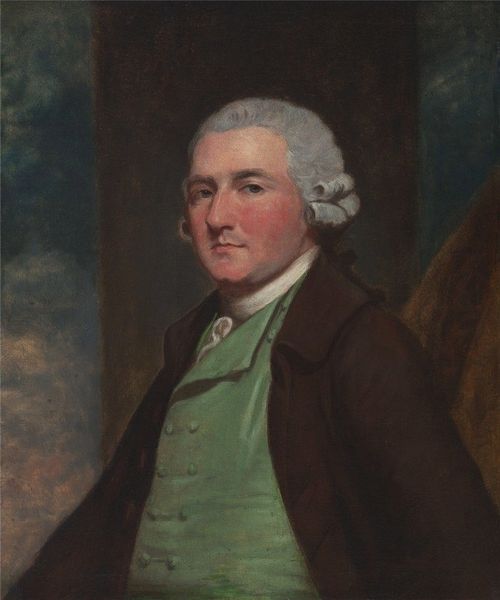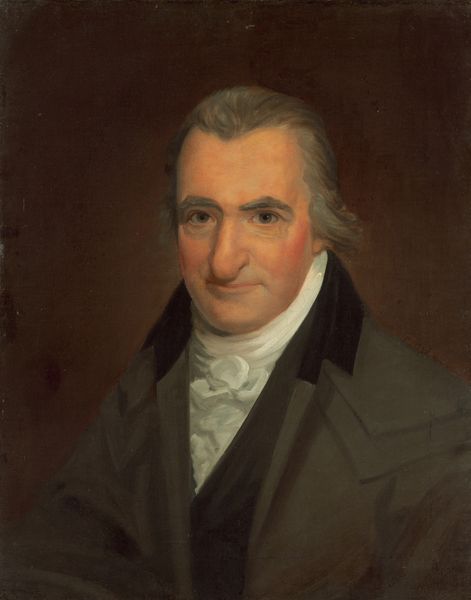
painting, oil-paint
#
portrait
#
neoclacissism
#
painting
#
oil-paint
#
history-painting
#
academic-art
Dimensions: 91.5 × 70 cm (36 × 27 1/2 in.)
Copyright: Public Domain
Curator: This is Charles Willson Peale’s "John Nicholson," an oil on canvas portrait dating back to 1790. Editor: There's an almost unsettling calmness. The muted colors, the posed stillness—it speaks of a very particular kind of control. Curator: Absolutely. Peale was deeply embedded in the political and intellectual circles of his time, and his portraits often reflect the ideals of the Enlightenment. Think about what the materiality of portraiture meant at that time, for example—how it reinforced social hierarchy. Editor: True. It’s interesting to think about the labor involved—the preparation of pigments, the weaving of the canvas, even the tailoring of his clothing. The act of displaying a figure amidst these objects really showcases consumption. Curator: And Nicholson himself would have been carefully crafting his image. Note the trappings of a scholar or gentleman, with the book, quill, and the hint of a library in the background. What class aspirations do these elements express? It speaks to his standing and access to knowledge. Editor: But it's also a commentary on access to resources. Who had the leisure time to pursue knowledge? To commission such a portrait? The materials and means to produce these elements would not be distributed equally throughout society. Curator: It is crucial to ask what it meant to fashion a narrative about oneself in the late 18th century. Peale here creates a particular kind of visual rhetoric through his application of neoclassical artistic philosophy. Editor: The composition seems very intentional, maybe even too refined. It almost feels like propaganda. A careful presentation to maintain a very specific material status in society through art and craft. Curator: So, by studying this, we uncover so much about the power dynamics of the era—who gets remembered, how they want to be seen, and the resources it takes to manifest that vision. Editor: Precisely. The image of Nicholson is not just paint; it's the culmination of resources, aspirations, and the labor of many hands—visible and invisible. A neat reminder that art and object are reflections of wider material conditions.
Comments
No comments
Be the first to comment and join the conversation on the ultimate creative platform.

